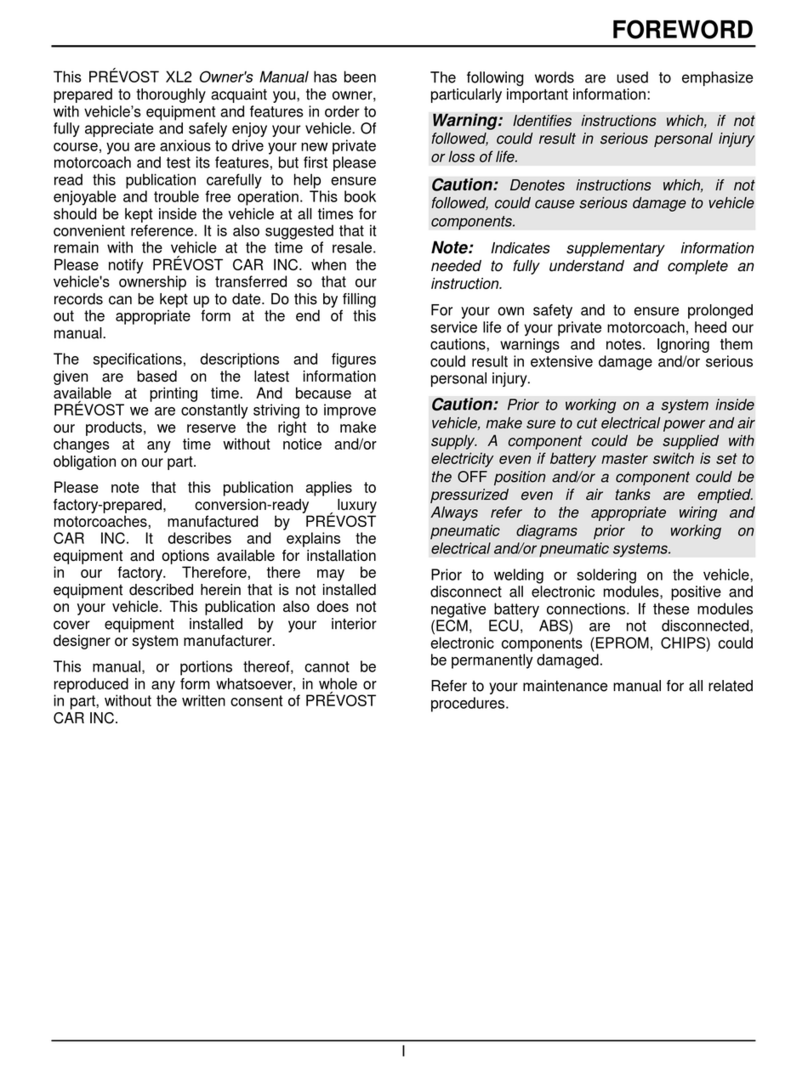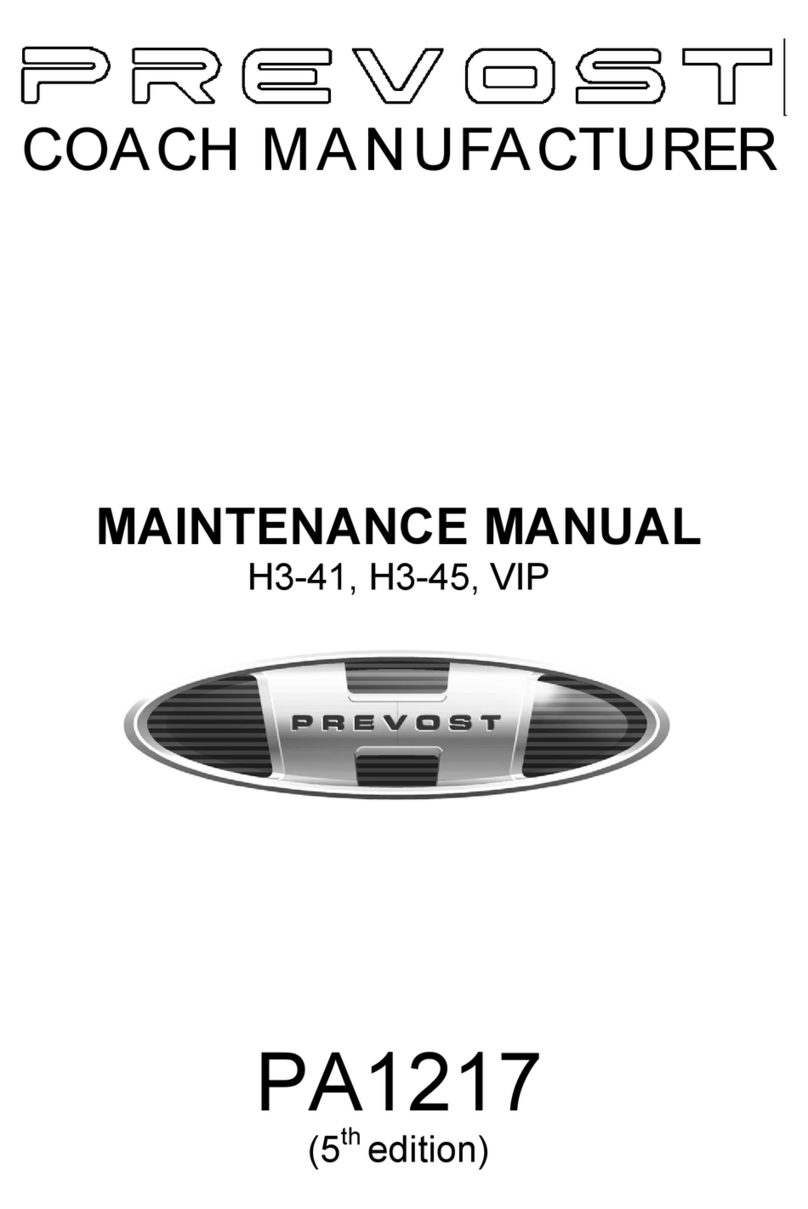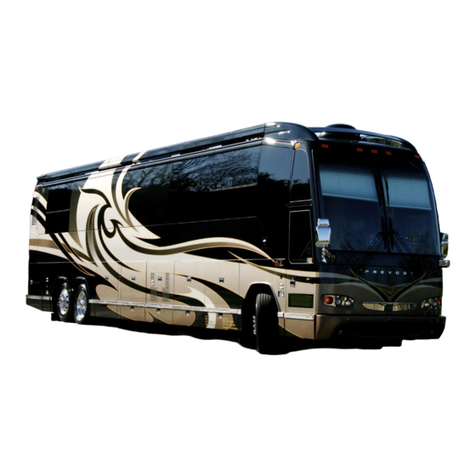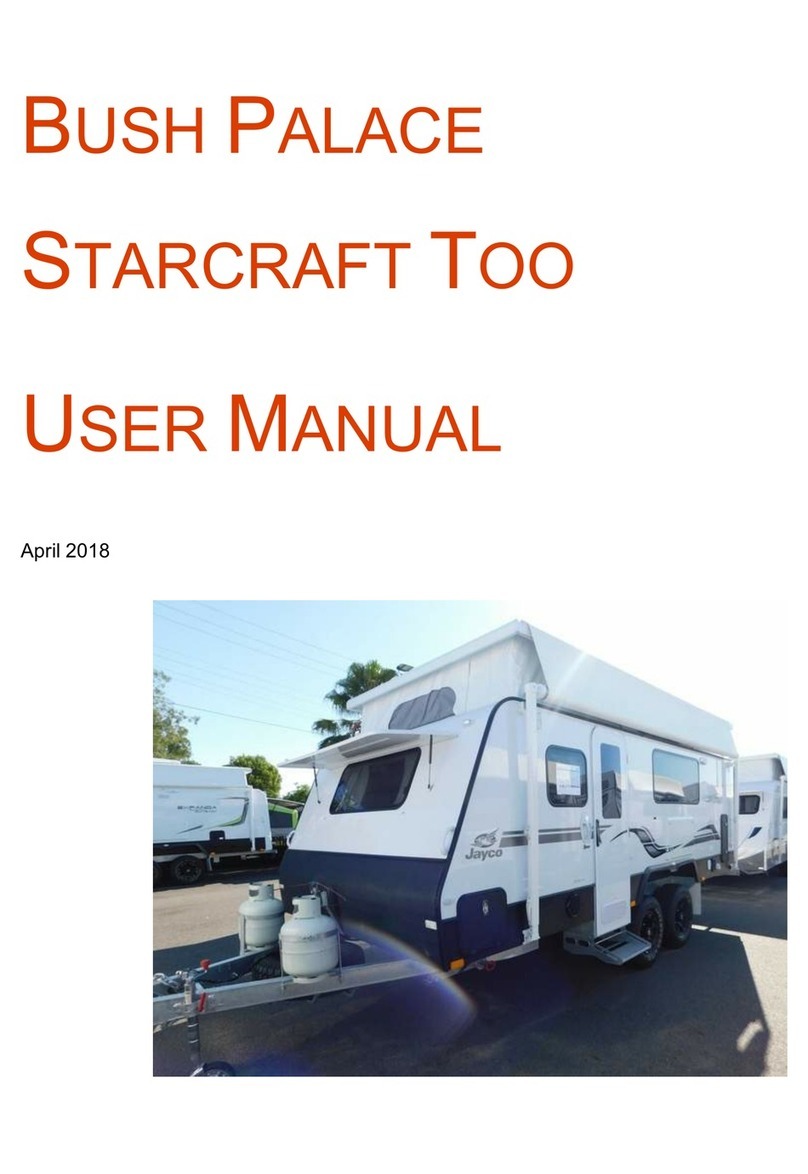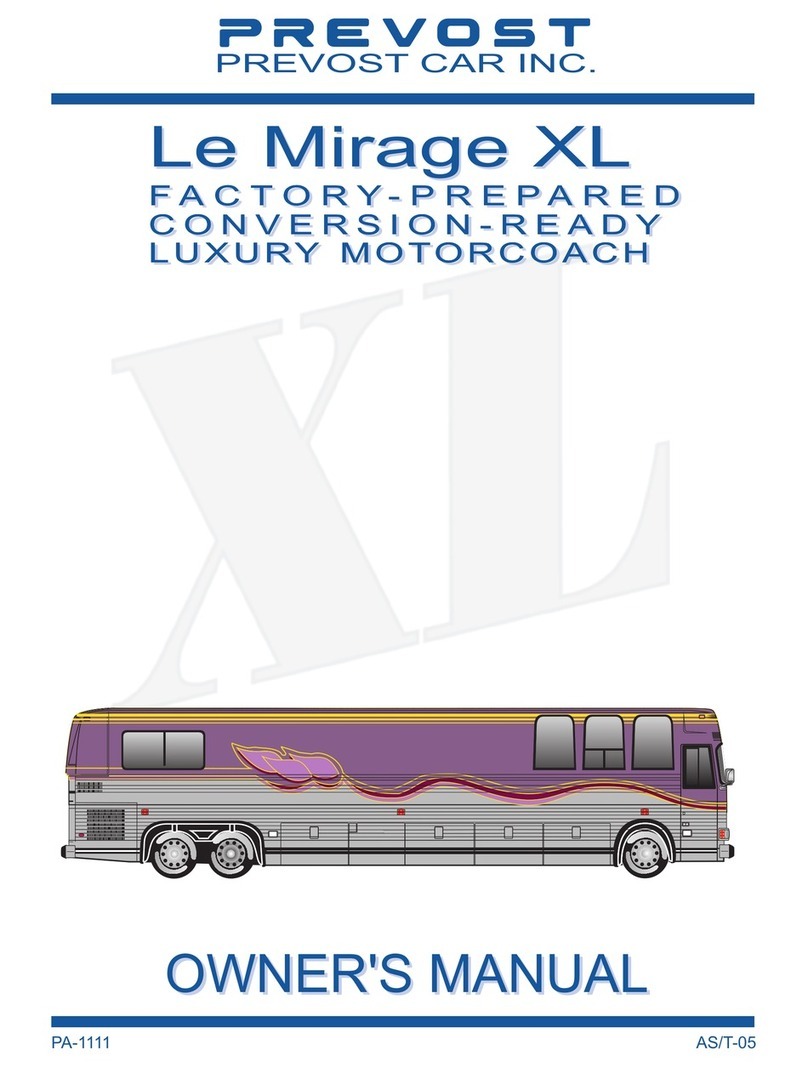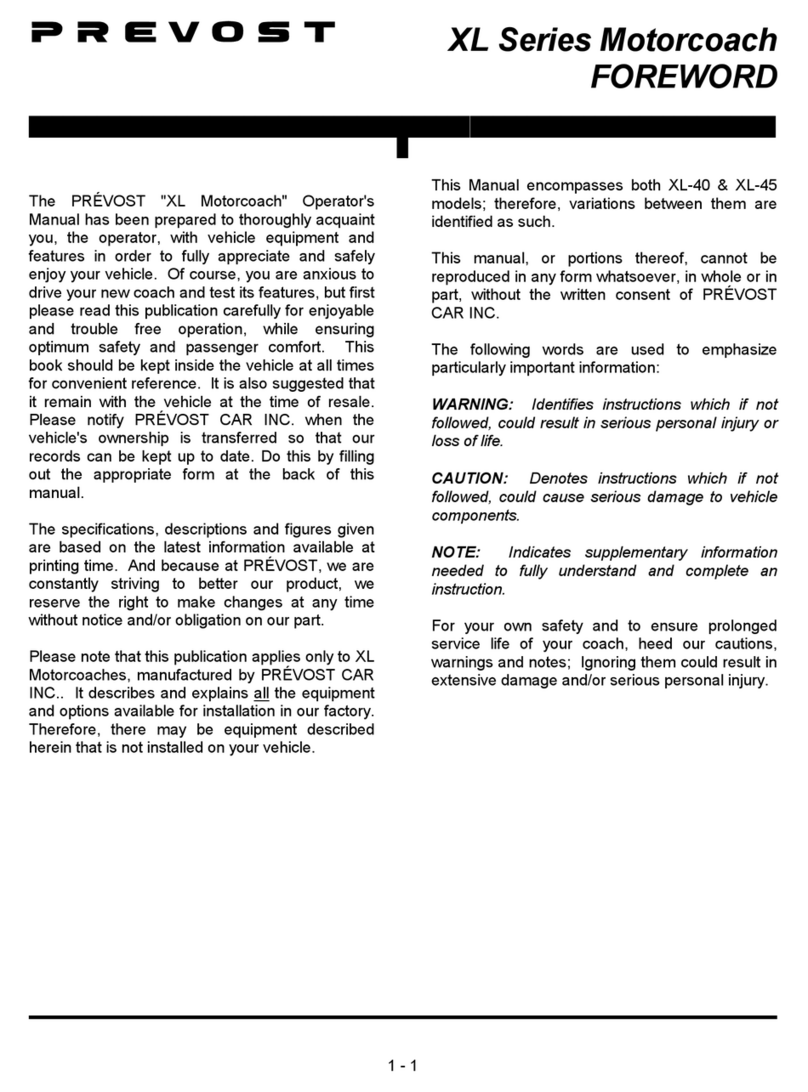
Section 00: GENERAL INFORMATION
PA1562
2
1. FOREWORD
This manual includes procedures for diagnosis,
service, maintenance and repair for components
of the X3 series coaches listed on the front
cover page. This manual should be kept in a
handy place for ready reference by the
technician. If properly used, it will meet the
needs of the technician and owner.
Information provided in Section 1 through 24
pertains to standard equipment items, systems
and components as well as the most commonly
used optional equipment and special equipment
offered on the coach models covered by this
manual. At the beginning of each section: a
Table of Contents and a list of illustrations give
the page number on which each subject begins
and where each figure is located. Coach
operating information is provided in a separate
Operator's Manual. Audio/Video system
operator instructions are also included in a
separate manual.
More specific information on engine and
transmission operating, maintenance, and
overhaul information is contained in the
applicable engine or transmission service
manual published by the engine or transmission
manufacturer. Engine and transmission parts
information is contained in the applicable engine
or transmission parts catalog published by the
engine or transmission manufacturer. All
information, illustrations and specifications
contained in this manual are based on the latest
product information available at the time of
publication approval. The right is reserved to
make product changes at any time without
notice.
NOTE
Typical illustrations may be used; therefore
minor illustration difference may exist when
compared to actual parts or other publications.
Prevost occasionally sends Maintenance
Information, Warranty Bulletins, Safety Recalls
or other literature to update users with the latest
service procedures. They are issued, when
required, to supplement or supersede
information in this manual. Update sheet should
be filled out and bulletins should be filed at the
end of their respective section for future
reference.
2. SCHEMATICS
Vehicle AIR SCHEMATICS are provided at the
end of Section 12, "Brake". SUSPENSION AIR
SCHEMATICS are provided at the end of
Section 16, "Suspension". Moreover,
ELECTRICAL SCHEMATICS are provided in the
technical publications box. Refer to those
schematics for detailed circuit information or
during diagnosis.
3. PRECAUTIONS TO BE OBSERVED
BEFORE WELDING
CAUTION
Precautions are to be observed before welding
to minimize the risk of major and costly
damage caused to the vehicle electronic
components.
NOTE
For X3-45 Multiplex vehicles, also execute
procedure no: PR060034 "MULTIPLEX
MODULES DISCONNECTION PROCEDURE
PRIOR TO WELDING" included at the end of
this section.
CAUTION
For vehicles equipped with a WCL system,
disconnect electronic controller connector.
CAUTION
Cover electronic control components and
wiring to protect from hot sparks, etc.
CAUTION
Position welding machine ground clamp as
close as possible to the work. Ensure that the
welding machine ground return clamp is well
secured and makes a good electrical contact
with a large metallic area of the chassis
located as close as possible to the welding
point.
CAUTION
Do not use TIG welding process on the
vehicle. This high frequency current process
can seriously damage the electronic
components.



